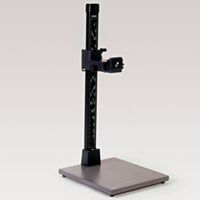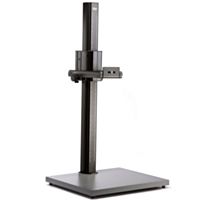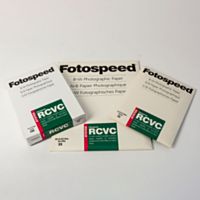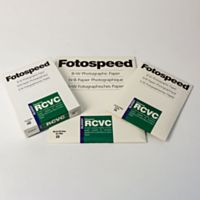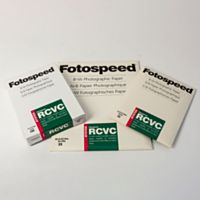Tony Worobiec: The Intimate Landscape - Waterfalls (Part 6)

Tony Worobiec is a Fellow of the Royal Photographic Society and one of our Fotospeed photographers. He has won awards for photography both in the UK and internationally and has authored 16 books. In this blog post, Tony discusses waterfalls, and how they can be photographed in a variety of different ways.
In my last blog, I discussed turning your camera away from the grand vista in front of you and looking at more discrete shots around your chosen landscape. This time, I’ll be discussing a similar skill around waterfalls, and how being more intimate with your landscape can help create some breathtaking imagery.
November, the perfect month for waterfalls

Part of the skill of landscape photography is to assess what genre is currently ‘in season’ or ‘on-trend’. As we slip into November with the increasing rainfall we are currently experiencing, I’d suggest considering photographing some of our truly splendid waterfalls.
I make that suggestion for two reasons; firstly, the flow of water is likely to be much more rampant than it was just one month previously. Consequently, they are likely to appear much more dramatic. Secondly, I favour November due to the vestige of autumn leaves, which adds an additional element of colour.
Don't assume that there are no interesting waterfalls close to where you live, check on the internet for possible locations and I think you might well be surprised. It doesn't have to be Niagara Falls to make an impressionable image!
Cascading Waterfalls

There are two sorts of waterfalls, those that cascade and the ones I can only describe as the ‘big drop’. Taking the former, these rarely appear as spectacular as the more thunderous high drop waterfalls, but in terms of offering superb photographic opportunities, they are hard to beat.
With cascading waterfalls, one can often identify a series of mini-waterfalls, which is why I recommend using a wide-angle lens. In this example, with the camera attached to a tripod, I was able to get within a few feet of the mini-cascades in the foreground, which in their own right offer as much interest as the bigger waterfall in the background. It is worth noting that it was raining at the time, which rather perversely helped as the overall dampness increased the colour saturation within this charming natural amphitheatre.
Big Drop Waterfalls

Whilst unquestionably dramatic, they are harder to photograph for various reasons. There isn't much to distinguish one ‘big-drop’ waterfall from another, as they are dominated by white, featureless vertical shafts of water.
The real interest can be seen at the bottom of these falls, as the water crashes onto the scattered rocks; this is where a long lens becomes useful. Primarily, it allows you to zoom into the most dramatic elements of the waterfall. It also helps to be able to shoot from a distance, because you are able to avoid the swirling spray these powerful waterfalls create. Even then it is good practice to check your front element from time to time.
Make it personal, look for detail

Another great advantage of using a long lens is that it encourages you to find compositions unique to you. Sometimes the most interesting part of the waterfall might be to the side of the force. Usually, if you focus on the area of the waterfall where the greatest amount of water is falling, you are likely to experience white-out.
Look instead for pleasing curvilinear designs. Weather is obviously important when photographing waterfalls, and unquestionably overcast lighting offers the best conditions as it helps to temper the contrast. The choice of aperture will, of course, depend on the conditions you are photographing under, but if you wish to capture that wonderful gossamer effect, which is the defining characteristic of this genre of photography, aim to set your shutter speed to between 1/8 to one second.
Think safety

No photograph is worth risking your life for. The closer you get to the edge of fast-flowing water, the slippier it is likely to be. At this time of the year, the rocks will be constantly wet, and with added layers of wet leaves the ground can be treacherous. I cannot emphasise more strongly the need to wear suitable footwear.
Something else you may also wish to consider is to not permanently keep your camera attached to your tripod. It can be an inconvenience packing away your camera only to have to get it out again several minutes later, but if it is safely stored in your camera bag and you do slip, you are unlikely to damage it. I'm writing from experience here because moments after taking this shot, I slipped, resulting in both me and my camera crashing to the ground; fortunately, I got away with just a slightly damaged, and very muddy lens-hood.
Look around you

When photographing waterfalls it is very easy to ignore equally worthy elements, such as the turbulent water near the falls. It is likely to be flowing over unseen rocks that can produce a delightful rhythmic effect.
Moreover, because most of these streams and rivers are often nestling in deep dells, they produce beautifully coloured reflections. Having made the effort to take your waterfall shots, (after-all, this genre is not for the faint-hearted), you owe it to yourself to produce a big print; a paper I can personally recommend is Fotospeed's High White Smooth 315. This smooth matt paper has a lovely enhanced white base which provides the perfect complement to the delicious highlights one can often capture when shooting flowing water.
Discover our wide range of paper to make your photography that much more breathtaking here.
For more tips and tricks, check out Fotospeed’s YouTube channel and sign up to the newsletter.


